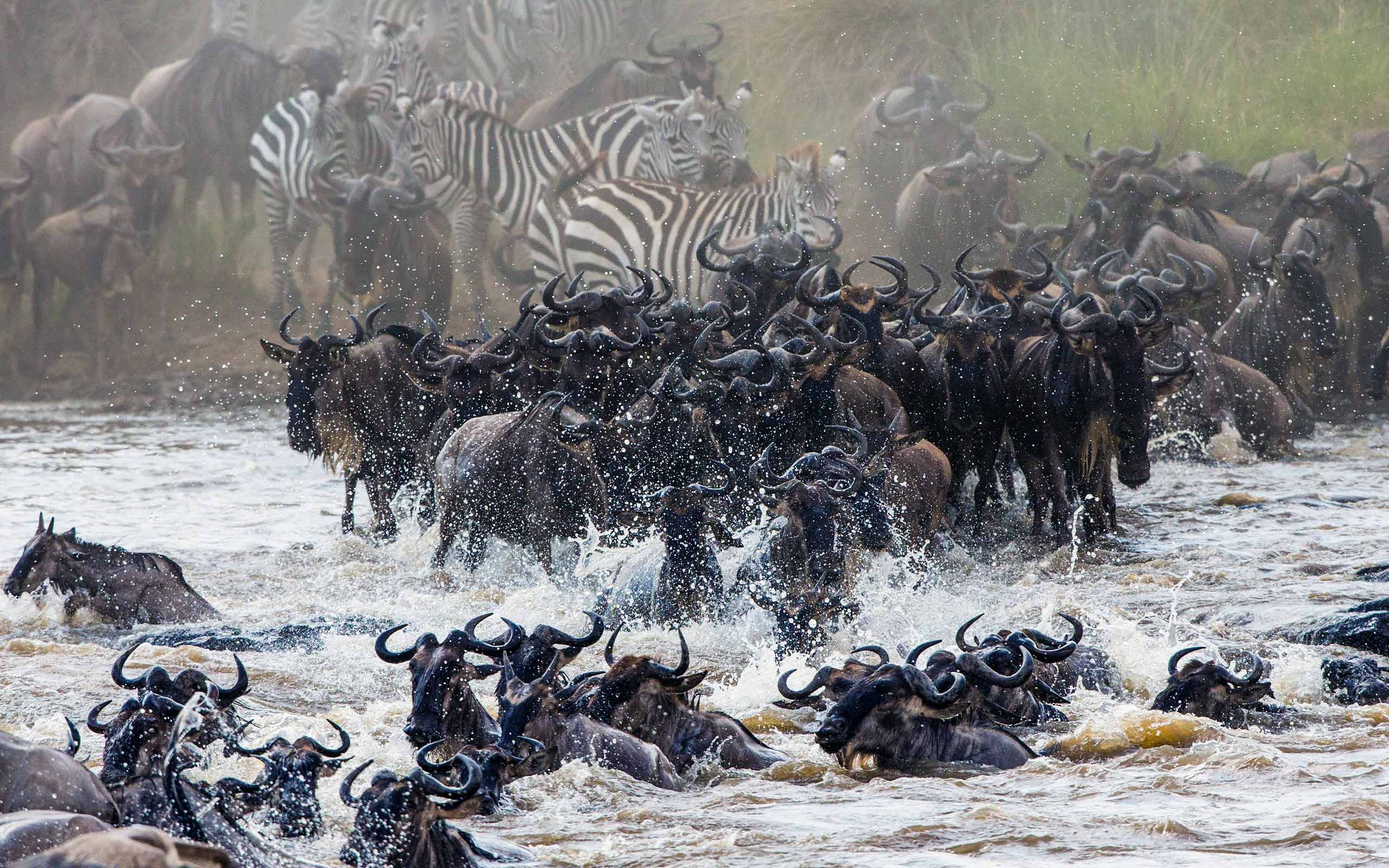Imagine standing on the edge of the vast Serengeti plains, where the horizon stretches endlessly, and the ground beneath you trembles with the thunderous hooves of over a million wildebeest, zebras, and gazelles. This is the Great Migration, one of nature’s most spectacular events, where these animals journey across the savannah in search of greener pastures. Each year, they face predators like lions and crocodiles, creating a dramatic and unforgettable spectacle. The Great Migration is more than just a safari; it’s an awe-inspiring display of survival, resilience, and the raw power of nature.
From the towering acacia trees to the Mara River crossings, every moment during the migration is a vivid reminder of Africa’s untamed beauty. Travelers who witness this epic event often describe it as life-changing, a bucket-list experience that reconnects them with the wild in the most profound way. Whether you’re watching a lion stalk its prey or seeing the sun set over a herd of wildebeest, the Great Migration offers a front-row seat to the circle of life.
The Cycle of Life: A Journey of Survival
The Great Migration is a continuous loop of life and death, driven by the rains and the instinct to survive. Beginning in the southern Serengeti, the migration is timed with the region’s rainy season, when the plains are lush and green, providing ample grazing for the herds. Calving season occurs between January and March, when over 8,000 wildebeest calves are born each day. This explosion of new life attracts predators, and the interaction between prey and predator is a dramatic aspect of the migration.
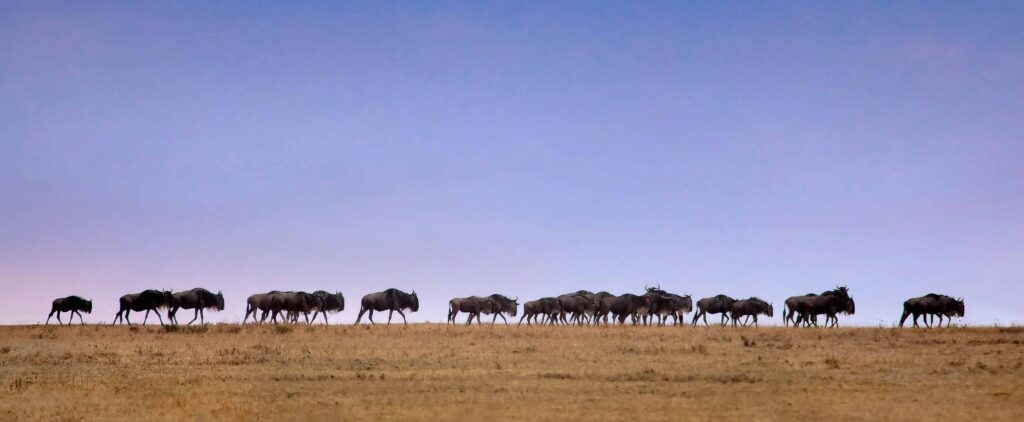
As the dry season approaches in May, the herds begin their journey northward. They travel in massive columns that can stretch up to 40 kilometers long, moving towards the Masai Mara in Kenya. The Mara River crossing, one of the most dramatic events of the migration, occurs between July and August. Here, the herds face one of their most perilous challenges: crossing a river filled with crocodiles. The sight of wildebeest and zebras plunging into the water, attempting to avoid the jaws of waiting predators, is one of the most heart-pounding scenes in nature.
By October, the herds start to move back towards the southern Serengeti, completing the cycle. This circular journey, covering nearly 2,000 miles, is not only a test of endurance but also a testament to the resilience of these animals. The Great Migration is a powerful reminder of the cycles of nature and the delicate balance that sustains life in the wild.
Experiencing the Migration: When and Where to Go
Witnessing the Great Migration is a seasonal experience, with different stages of the migration offering unique viewing opportunities. The best time to visit depends on what part of the migration you wish to see.
- January to March: This is the calving season in the southern Serengeti. It’s a great time to see newborns and predator action as lions and cheetahs take advantage of the abundance of prey. The landscape is lush, making for stunning photographic opportunities.
- April to June: The herds begin moving northwards, passing through the central Serengeti and the Grumeti River. This is the start of the long trek, and the herds can be seen spread out over a vast area.
- July to August: The dramatic river crossings at the Mara River occur during these months. This period is considered the peak of the migration, where the action is intense, and the risk is highest. Viewing points in the Masai Mara are excellent for catching the river crossings.
- September to October: As the herds move back into Tanzania, they cross the Mara River again. This is a less crowded time to visit, but still offers spectacular wildlife viewing as the herds make their return journey.
- November to December: The herds spread out in the southern Serengeti as they settle in for the calving season, completing the cycle once more.
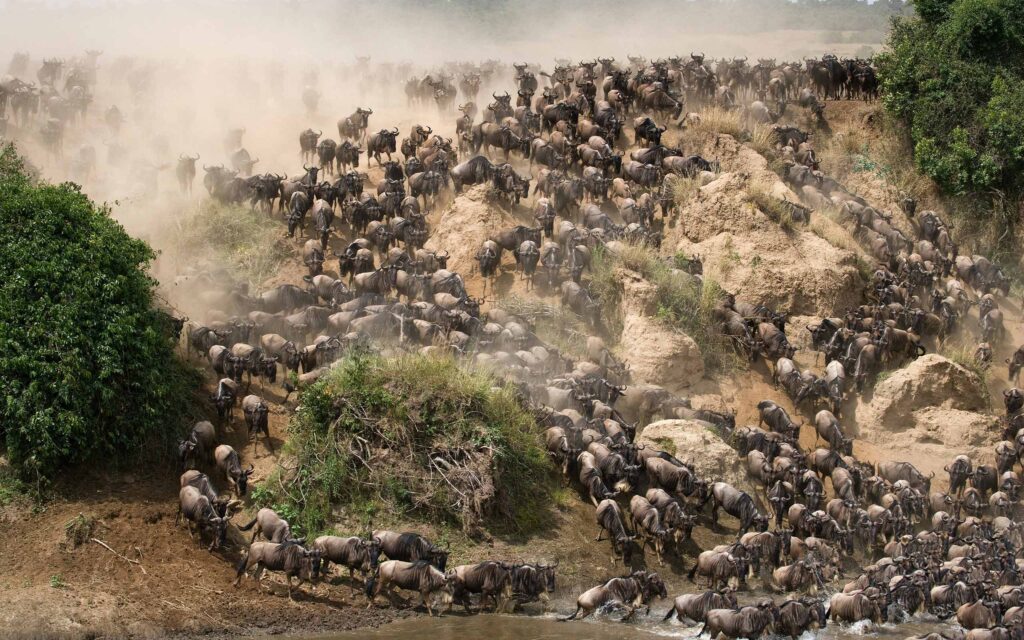
Choosing Your Safari Experience: Lodges, Camps, and More
The Great Migration can be experienced in various ways, depending on your preferences and budget. From luxury lodges to mobile camps, there are numerous options that offer a front-row seat to this natural wonder.
Luxury Lodges: Singita
For an unforgettable safari experience during the Great Migration, Singita sets the gold standard in luxury and sustainability. Nestled in the heart of Africa’s most iconic landscapes, Singita’s lodges and camps, located in Tanzania’s Grumeti Reserve and Kenya’s Mara Triangle, offer a seamless blend of opulence and nature. Picture yourself in an elegant suite with panoramic views of the savannah, where every detail, from the gourmet cuisine to the personalized service, is crafted to enhance your connection with the wild. At Singita, it’s not just about witnessing the migration; it’s about immersing yourself in a world where conservation and luxury coexist harmoniously.

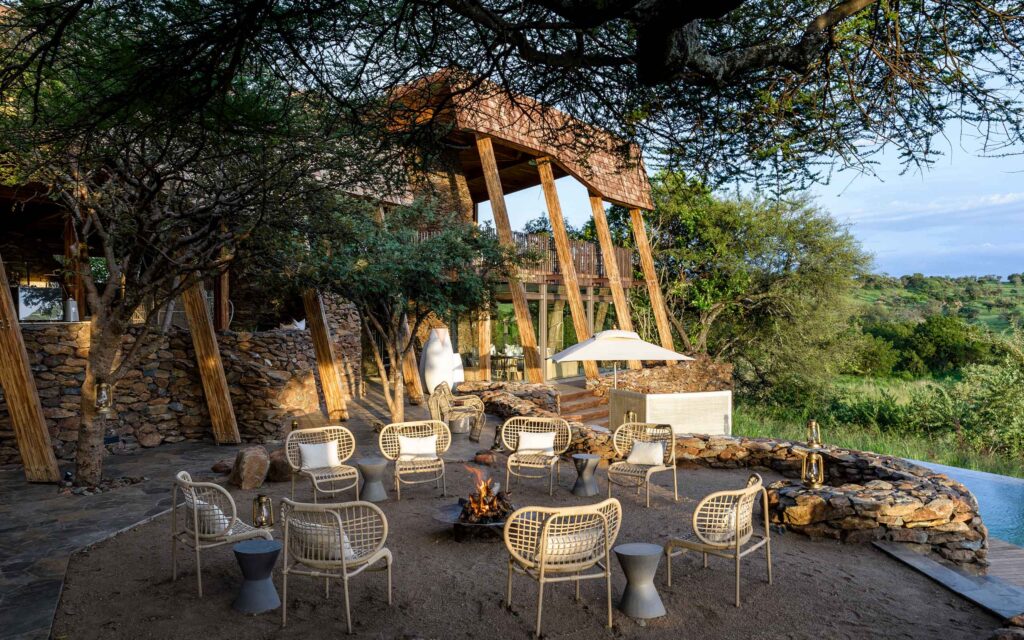
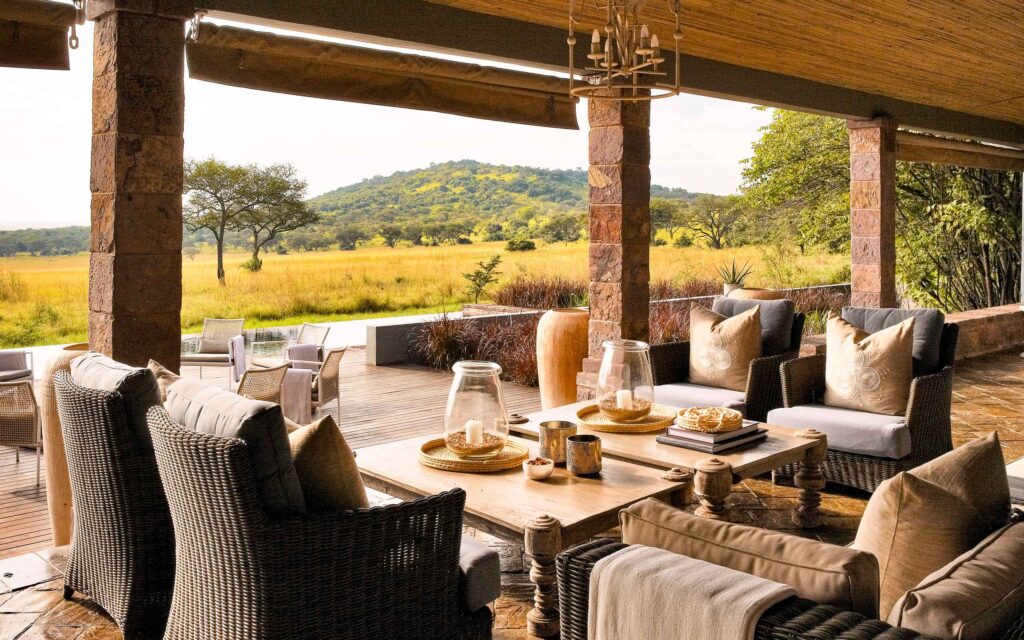
Mobile Camps
For a more immersive experience, mobile camps move with the herds, ensuring you are always in the heart of the action. These camps provide a more rustic, yet comfortable, safari experience, allowing you to be close to nature without sacrificing too much comfort.
Walking Safaris and Balloon Safaris
For the adventurous, walking safaris offer a chance to explore the Serengeti on foot, guided by experts who provide insights into the ecosystem. Balloon safaris, on the other hand, offer a bird’s-eye view of the migration, providing a unique perspective as you glide silently over the plains at sunrise.
Beyond the Migration
While the Great Migration is a must-see, both Tanzania and Kenya offer much more for travelers. Extend your stay to explore the other wonders these countries have to offer.
- Tanzania: Visit the Ngorongoro Crater, a UNESCO World Heritage site, home to a high concentration of wildlife in a stunning volcanic caldera. Explore the idyllic beaches of Zanzibar, where white sands and turquoise waters provide the perfect post-safari relaxation. Mount Kilimanjaro, Africa’s highest peak, offers trekking opportunities for those seeking adventure.
- Kenya: The Masai Mara is not just about the migration; it’s also a year-round wildlife haven. Explore the diverse landscapes of the Rift Valley, visit the vibrant city of Nairobi, or relax on the pristine beaches of the Kenyan coast. The cultural experiences, such as visiting a Maasai village, provide a deeper understanding of the region’s heritage.
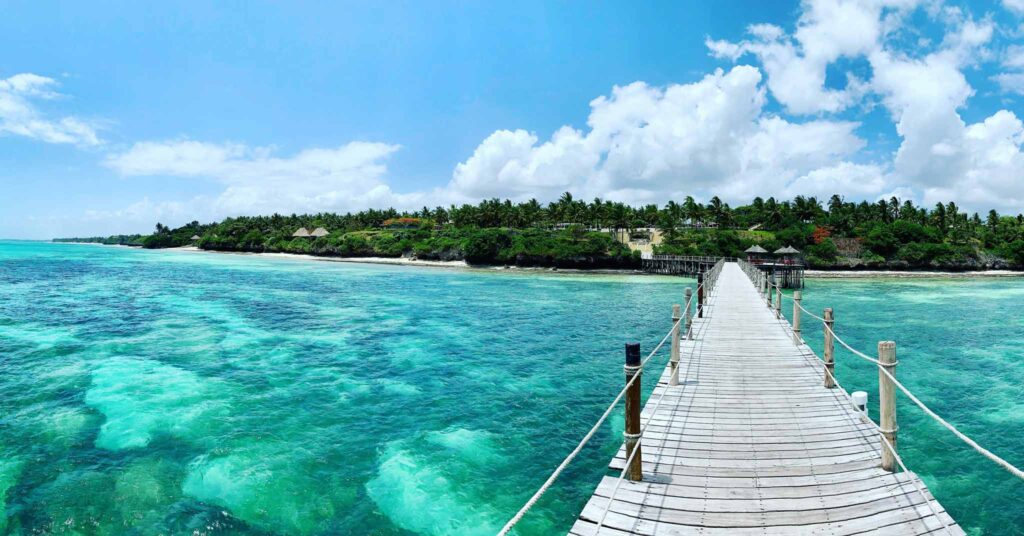
Conservation and Responsible Tourism
The Great Migration is not just a breathtaking natural event; it is also a vital part of Africa’s ecosystem, deeply intertwined with various conservation efforts aimed at preserving this extraordinary spectacle for future generations. Numerous projects in Tanzania and Kenya are dedicated to safeguarding the migration routes and the wildlife that depend on them.
Mara-Serengeti Ecosystem Project
One key initiative is the Mara-Serengeti Ecosystem Project, which focuses on protecting the migration corridors that connect the Serengeti in Tanzania to the Masai Mara in Kenya. These corridors are crucial for the free movement of wildlife, ensuring that animals can access different areas throughout the year. The project works to prevent habitat fragmentation by combating illegal encroachment and managing human-wildlife conflict. It also involves local communities in conservation efforts, helping to reduce poaching and promoting sustainable land use practices.
Mara Predator Conservation Programme
Another significant effort is the Mara Predator Conservation Programme, which aims to protect the big cats that are a vital part of the Great Migration’s ecosystem. This program focuses on monitoring predator populations, mitigating human-wildlife conflict, and working with local communities to create predator-friendly environments. By safeguarding the lions, cheetahs, and leopards that prey on the migrating herds, this initiative helps maintain the delicate balance of the ecosystem.
The Frankfurt Zoological Society
The Frankfurt Zoological Society (FZS) has been active in the Serengeti for decades, working on anti-poaching initiatives, habitat restoration, and community engagement. Their efforts include equipping and training park rangers, conducting research on wildlife populations, and supporting local education programs that emphasize the importance of conservation.
Eco-friendly Lodges and Camps
Additionally, eco-friendly lodges and camps, such as those operated by Singita and Asilia Africa, play a crucial role in conservation by minimizing their environmental footprint and supporting local conservation projects. These lodges often contribute a portion of their profits to conservation efforts, ensuring that tourism directly benefits the preservation of the natural environment.
Visitors can also participate in conservation efforts by choosing to travel with responsible tour operators that support these initiatives. By staying at eco-friendly accommodations and participating in conservation-focused activities, travelers help ensure that the Great Migration continues to be a thriving natural wonder for generations to come.
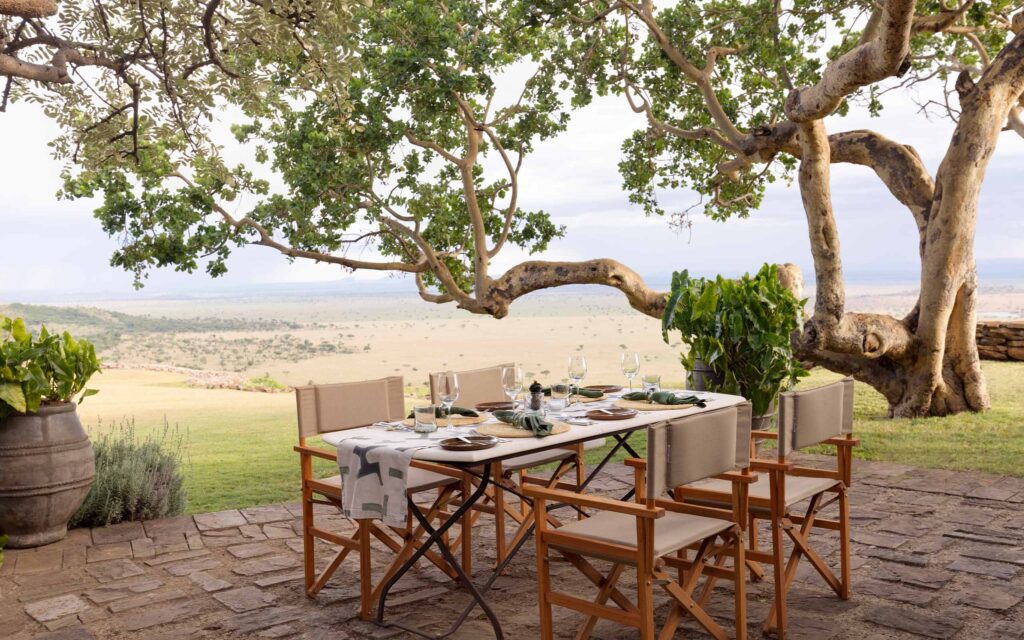
A Migration Like No Other
The Great Migration is more than just a wildlife spectacle; it’s about witnessing the raw, unfiltered beauty of nature, where life and death play out on an epic scale. Whether you’re a seasoned traveler or embarking on your first safari, the Great Migration is an experience that will stay with you forever.
Plan your journey with Visit Africa and let us help you craft the perfect safari adventure. From the Serengeti to the Masai Mara, from luxury lodges to mobile camps, we offer personalized itineraries that ensure you won’t miss a moment of this incredible event. Experience the Great Migration and discover why Africa is truly a place like no other.

